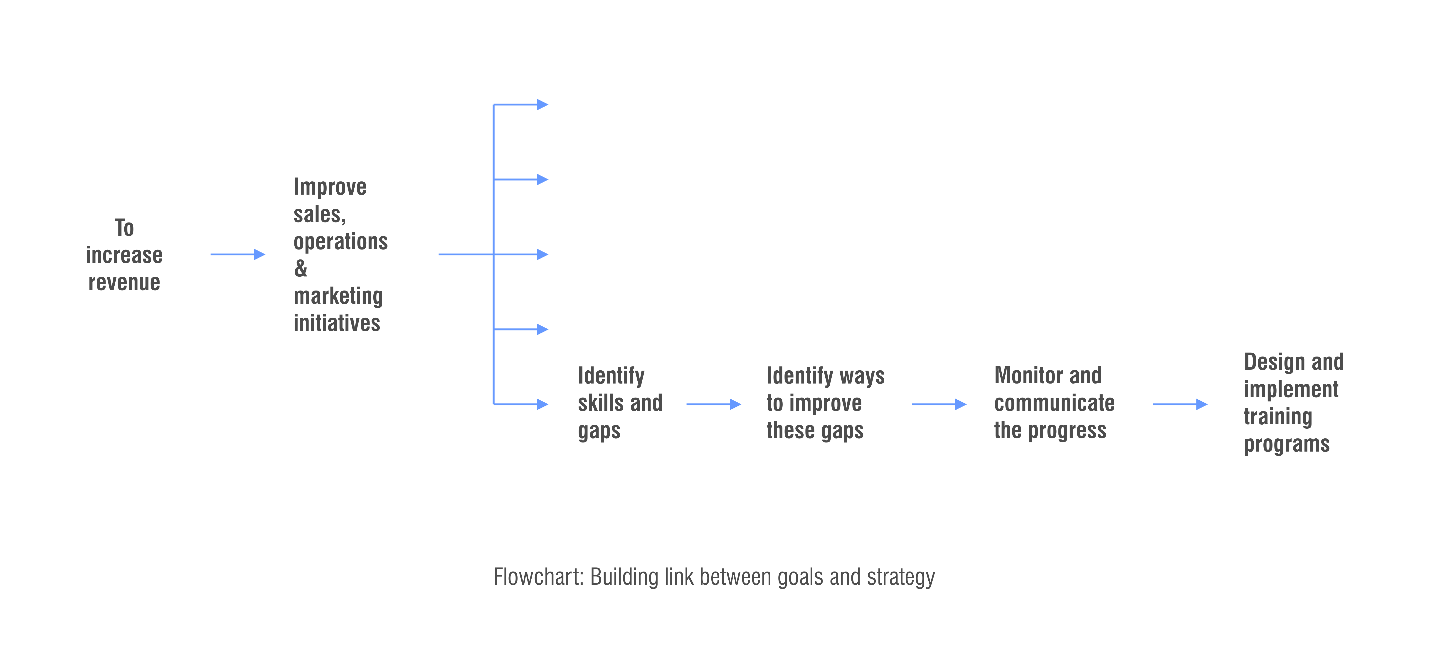
There was a time when business meant revenues and profits. Today, business means people.
Quintessentially, our talent management strategy has been an afterthought. HR managers seldom saw it coming until the damage was done and then their role was limited to troubleshooting the talent woes one way or the other, here and there. We endured its inefficiencies because at no time it threatened our survival. With more disruptive technologies and changing markets, there is no room left for reactive approaches. We are pressed to shift our preferences from fire-fighting to proactive goal setting.
However, goals too have been the most misunderstood business jargon of all times. Organizations set goals but in the absence of a clear and consistent path, lose sight of them and keep moving with their daily interim businesses. The relevance of goals is reduced to a fancy boardroom word. 67% of businesses confess that they fail to achieve their strategic goals. In this article, we try to build the missing link between organizational goals and their attainment.
Financial gains: While most businesses will restrict their goals to improving profits and increasing revenue, the cost reduction aspect is equally important. To flourish and endure ever challenging markets, the business fabric needs to spread at both ends: cost reduction and sales enhancement.
Brand reputation: Customer loyalty depends on brand reputation and customer experience. Building a great product or service is just the beginning. Customer retention will depend on your staff’s interaction with them at every touch point. A good salesperson can sell an average product and a poor one can lose an exceptional one. A rude receptionist can turn a strong potential customer away and a great one can make indecisive ones want to buy more from you.
Production speed: Increased production drive improves the chances of reaching more customers in less time. This can be best explained in economies of scale. However, increased production demands an efficient and driven workforce too.
Competitive advantage: As businesses go global, the need to continuously learn, innovate, compete and improve grows larger every day. Only a resilient and growth-oriented workforce can adapt to change and incorporate new technologies.
One single common factor in all the above goals is people. They are the means to achieve the desired ends. Talent managers need to cultivate a competent, engaged and motivated workforce. Here is a 6 step guide to do it right:
Step 1: Know your business objectives: Begin with one or two objectives. Whether they are hard (revenue, productivity or profits) or soft objectives (brand reputation), they should be measurable.
Step 2: Define what results you expect: Define results for objectives you decided in step 1. For example, to achieve increased revenue you might have to increase sales, operations and marketing initiatives.
Step 3: Identify how you are going to measure the progress: Decide what roles, tasks or skills you will need to achieve the result you fixed in step 2.
Step 4: Figure the gaps: conduct a fish-bone analysis. Expand step 3 and know your existing skills level and what you need to do to bring it to the expected level.
Step 5: Discuss goals and progress: Let people know how their inputs are helping the organization achieve its goals. This can be a great motivator.
Step 6: Design and implement training programs: Identify the competency gaps and arrive at suitable training models to address them.

Haphazard and unaligned training programs are causing more damage than repair. Only 12% of people feel that they are using their skills properly. Indecisive goals, improper communication and inefficient training design leave the trainees lurking to find purpose in the process. There isn’t a greater de-motivator than a purposeless drive.
We live in a disruptive world where goals keep shifting and we need to calibrate our bearings often. Any fixed approach will only lead us to the wrong destination. We have been looking through predefined lenses of talent acquisition and there has been a lot of buzz around finding the right talent and hunting the purple squirrels. This has led HR to overlook the potential that is right under its nose; current employees. Why seek that which can be comfortably nurtured?

CredBadge™ is a proprietary, secure, digital badging platform that provides for seamless authentication and verification of credentials across digital media worldwide.
CredBadge™ powered credentials ensure that professionals can showcase and verify their qualifications and credentials across all digital platforms, and at any time, across the planet.

Please enter the License Number/Unique Credential Code of the certificant. Results will be displayed if the person holds an active credential from TMI.